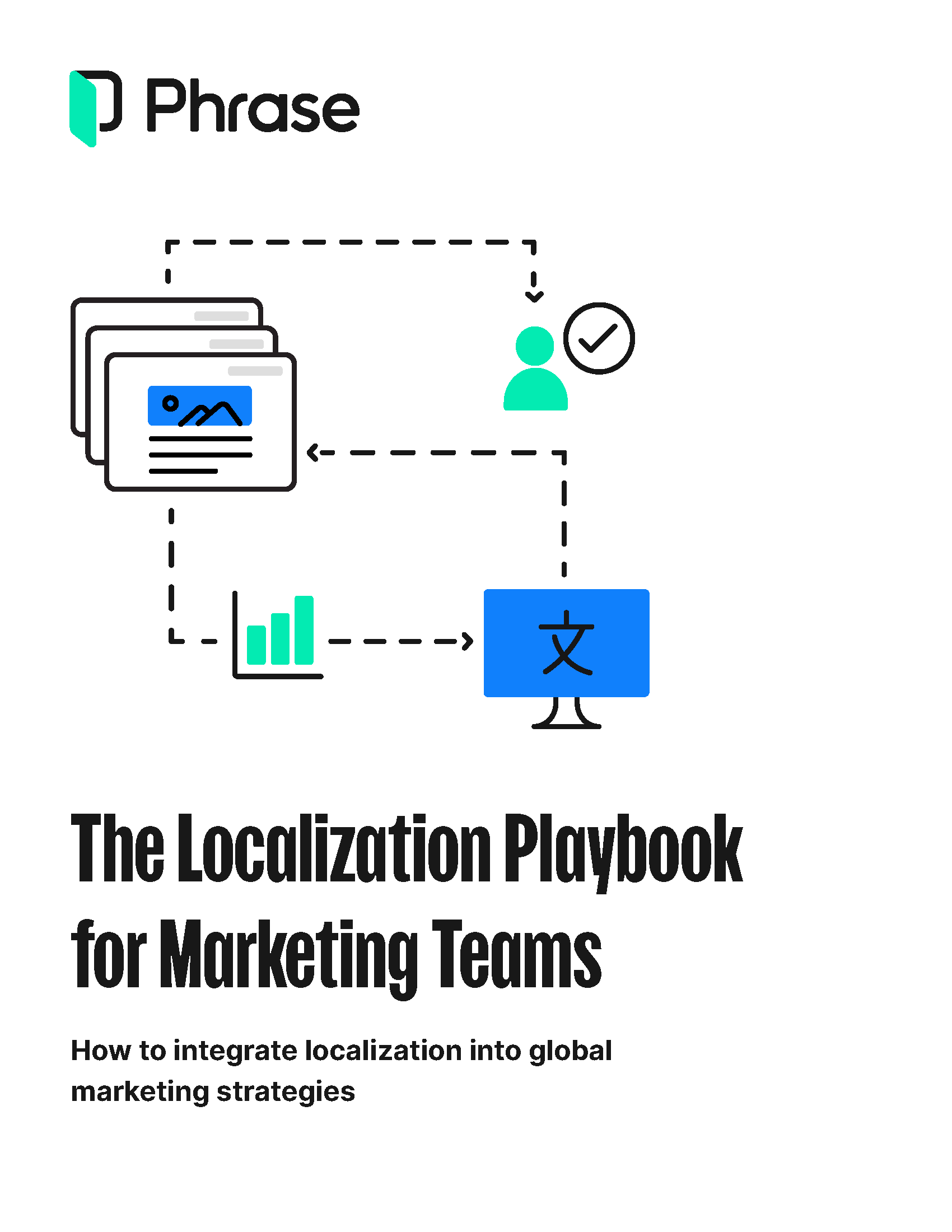Global business
Multilingual content marketing: how to target global traffic

40% of the global population is using the internet today—and that number is constantly rising. Still, that doesn’t mean that over 5B people will engage with your brand—especially if you don’t leverage content customized for target audiences across diverse cultures. For brands venturing into new markets, a culturally relevant approach to content marketing is essential.
Considering that 65% of global consumers prefer content in their own language, using multilingual content marketing becomes a game-changer for connecting with potential customers and boosting conversions on a global scale. This guide lays out best practices to help you make the most of multilingual content marketing with the right strategy and technology.
What is multilingual content marketing?
Multilingual content marketing refers to creating and disseminating marketing content in multiple languages to effectively engage with audiences across cultures.
Marketing messages, materials, and campaigns are tailored to resonate with potential customers who speak different languages and have unique cultural backgrounds.
The aim of multilingual content marketing is to break down language barriers and create a more personalized experience for global audiences.
Brands that deliver content in the preferred languages of their target audiences are able to improve brand visibility, strengthen credibility, and build engagement—ultimately driving conversions and business growth.
Following this strategy means everything is adapted—from website copy and social media posts to email campaigns, videos, and advertisements—to ensure that the brand’s messaging aligns with local cultural contexts.

FREE DOWNLOAD
Make global marketing strategies work in local markets
Harness the power of localization to effectively connect with audiences worldwide and discover best practices for making your next global marketing endeavor a success.
Why multilingual content marketing is key for global business
When done right, multilingual content marketing can help growing businesses thrive in the ever-changing global marketplace. Consider these benefits:
Reach more audiences
Different regions have diverse languages and cultures. Through content created in multiple languages, businesses can effectively engage with audiences who might not be proficient in the company’s primary language. Using multilingual content widens the brand’s reach and allows it to connect with potential customers in global markets who might otherwise remain inaccessible.
Build brand credibility
Delivering content in the native language of a target audience shows respect and a commitment to understanding customer needs. Customers are more likely to engage with a brand that values and respects their language and culture, so building trust and credibility through local content can be a worthwhile investment.
Improved search engine visibility
Multilingual content enhances a brand’s international SEO (search engine optimization) efforts. When content is available in different languages, it’s more likely to appear in search results when users look up information in those languages. This boosts the brand’s visibility.
How to make the most of international SEO
International SEO is one of the best promotion methods for expanding the global reach of your website. Here’s all you need to know to get started.
Stronger customer experiences
Providing content in a customer’s preferred language contributes to an enhanced user experience (UX). People are more likely to engage, stay longer, and return to a website or platform when they feel understood and valued, creating a positive impression and fostering brand loyalty.
Higher conversion rates
Multilingual content marketing directly impacts conversion rates, leading to more conversions such as purchases or registrations. When customers can understand and connect with a brand’s messaging in their own language, there are fewer barriers to encouraging them to take action.
What makes successful multilingual content marketing
Brands can demonstrate their commitment to inclusivity, cultural understanding, and personalized experiences by using multilingual content marketing. Beyond simply translating, multilingual content marketing encompasses cultural adaptation, ensuring that the content resonates deeply with local audiences.
Through achieving these objectives, businesses can establish a competitive edge in international markets, foster customer loyalty, and ultimately drive revenue growth.
A clear strategy guides the decision-making process, ensuring that efforts are aligned with business goals and audience expectations. On the other hand, robust technology supports the execution of the strategy by streamlining processes, enhancing efficiency, and enabling effective communication.
Keep in mind: Together, a well-crafted strategy and advanced technology form the backbone of successful multilingual content marketing, enabling businesses to effectively navigate the challenges of global communication and engagement.
How to build an effective multilingual content marketing strategy
Developing an effective multilingual content strategy is an elaborate process with several important considerations. Let’s take a closer look at each of them:
- Understand your target audience and competitors across markets
- Create compelling content with localization in mind
- Optimize your content for multilingual SEO
- Leverage locally relevant promotional channels and influencers
- Build authoritative links to your multilingual website content
Step 1: Understand your target audience and competitors across markets
Begin by conducting thorough market research to gain insights into the preferences, behaviors, and cultural nuances of your target audiences in different regions. Understand their pain points, aspirations, and how they engage with content.
Simultaneously, analyze competitors’ strategies to identify gaps and opportunities. Examining the content your competitors publish to connect and engage with audiences in different languages can help you adjust your own content and localization strategy—and stay ahead in the game.
Step 2: Create compelling content with localization in mind
Translation and localization aren’t the same. That’s why creating content for local audiences requires more than just transferring the meaning of text between languages.
Craft content that takes into account cultural sensitivities, humor, imagery, and idiomatic expressions. Use local references, stories, and examples that establish an emotional connection.
With content localization, you can ensure that your messaging feels more authentic and relevant for potential customers in each target market, ultimately boosting engagement.
Step 3: Optimize your content for multilingual SEO
Multilingual SEO is crucial for visibility across different language markets. When implemented properly, it improves your content’s ranking in various languages in search engines such as Google.
Conduct keyword research for each target language and optimize content accordingly. Tailor meta tags, headers, and URLs to reflect the target language while adhering to SEO best practices.
Step 4: Leverage locally relevant promotional channels, influencers, and partnerships
Identify and utilize digital platforms and social media channels for product promotion that are popular and influential in each target market. For example, Facebook and Twitter are popular platforms with US-based consumers, while WeChat is the leading social platform in China.
Equally important, engage with local influencers who have a strong following and credibility in those markets. Partnering with influencers helps amplify your content’s reach and credibility among local audiences.
Using a well-structured plan, promote your multilingual content across different platforms and languages. This plan should include social media posts, email campaigns, paid advertisements, and other relevant channels. Consistency in promotion ensures that your content reaches its intended audience and generates engagement.
To support your promotion efforts, consider partnering with other brands. Collaborate with local partners, industry publications, and websites relevant to your industry in each of your target markets.
Step 5: Build authoritative links to your multilingual website content
Building high-quality backlinks from reputable online sources can boost your content’s visibility and bolster its credibility. If you’re producing excellent, location-specific content, organic links from authoritative websites with good domain authority should naturally increase.
However, you can give yourself a boost in link acquisition. Consider hiring an outreach manager to connect with local businesses and collaborate with industry publications relevant to each of your target markets to get as much “link juice” as possible.
How to implement your multilingual content marketing strategy with the right technology
Effective multilingual content marketing strategy requires the integration of diverse technology tools. Technology improves efficiency, accuracy, and scalability, and allows you to deliver consistent and engaging content experiences to a global audience.
Moreover, you can measure and refine your efforts based on real-time data, ensuring that your strategy continues to evolve and drive impactful results in the ever-changing landscape of global marketing. Here’s how to leverage technology to bring your multilingual content marketing strategy to life:
Use a CMS designed for multilingual websites
Content management systems (CMS) help your global audience seamlessly access relevant content. A CMS equipped with multilingual capabilities streamlines the process of managing and updating content across different language versions of your website.
Look for a CMS that allows you to create, organize, and publish content and marketing materials in various languages while maintaining a consistent UX. For example, if you choose WordPress as your CMS, you can connect it with a WordPress translation plugin to streamline multilingual content management.
Localize content with cloud translation software
Cloud-based translation tools simplify the localization process by enabling real-time collaboration between content creators and translators. Without them, it can be challenging to maintain consistency, accuracy, and efficient workflows across multiple languages. Cloud translation facilitates the rapid adaptation of content, ensuring timely delivery to diverse markets.
Deploy a content delivery network (CDN)
A CDN enhances the performance and accessibility of your multilingual content by distributing it across servers in various geographic locations, reducing loading times and latency. Visitors from different regions get a smooth UX and faster loading times. In turn, this contributes to higher user engagement and better SEO rankings.
Drive engagement for your content with social media, email marketing, and chat tools
Social media scheduling and management tools allow you to plan and automate posts across different time zones and native languages. Email marketing platforms with multilingual capabilities enable personalized communication with subscribers in their preferred languages. Additionally, multilingual chatbots enhance customer support by providing instant responses in various languages, ensuring seamless interactions.
Monitor performance with web analytics and SEO tools
Web analytics tools help you monitor the performance of your multilingual content by tracking metrics such as traffic, engagement, and conversion rates across different language versions. SEO tools assist in monitoring keyword rankings, search visibility, and organic traffic for each language. These insights guide your optimization efforts and enable data-driven decision-making.
Wishing a blessed, peaceful and healthy holy month to everyone celebrating 😀#RamadanKareem pic.twitter.com/FCgVEER9lZ
— Arsenal (@Arsenal) April 23, 2020
Multilingual content marketing examples to learn from
Many global companies across industries leverage multilingual content marketing to engage diverse audiences and drive global growth. Let’s have a look at some of the most prominent ones:
Airbnb
Airbnb tailors its website and app content to different languages, providing localized experiences for users in various markets. Destination-specific blog posts, travel guides, and more are created in multiple languages so that content resonates with users across cultures.
Coca-Cola
Coca-Cola has a strong presence in various markets, and its multilingual content marketing approach reflects this global reach. The iconic beverage brand creates market-specific social media campaigns, videos, and advertisements that consider local culture and language nuances. This customized strategy for each market enables it to connect with consumers on a personal level in different regions.
IKEA
IKEA is renowned for its multilingual catalog and website, which are available in multiple languages to cater to diverse markets. Product names are often adapted to local languages, and assembly instructions and customer support are provided in various languages. Localization helps IKEA build credibility with customers on a personal level.
Netflix
Netflix uses multilingual content marketing to promote its shows and movies around the world. Trailers, posters, and promotional content are presented in different languages, tailored to the preferences of each local audience. Netflix’s marketing and brand presentation not only attracts subscribers but also enhances UX by delivering content in viewers’ preferred languages.
Starbucks
Starbucks adapts its multilingual content marketing to suit the coffee culture of various markets. Their localized social media accounts share content relevant to local holidays, events, and preferences. This approach helps them build deeper connections with customers in different regions.
Connect with audiences around the globe
Even after you’ve translated your content, you still need to do more to connect effectively with customers. Multilingual content marketing builds connections, fosters trust, and creates experiences that resonate with your customers. Speaking your customers’ languages, both linguistically and culturally, unlocks opportunities for growth, engagement, and success in a diverse and dynamic global marketplace.




